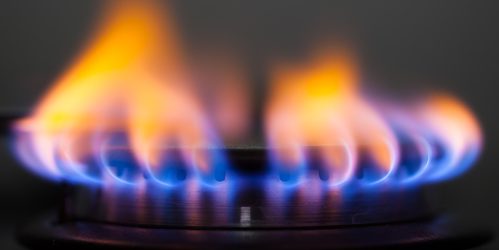Residential natural gas and propane. Keeping our homes comfortable and functional requires energy. The list of home energy uses is extensive. From heating and cooling to cooking and powering our electronics, energy plays a central role in our lives.
We rely on a number of energy sources to meet our needs. According to the U.S. Energy Information Administration, the breakdown is natural gas (46%), electricity (43%), fuel oil (6%) and propane (5%). Natural gas and propane, therefore, account for more than half of all energy consumed in U.S. homes.
Sometimes the terminology surrounding these gases can be confusing. Here is an overview of residential gases that will not require you to relive the trauma of high school chemistry class.
Natural Gas Dominates Market
Natural gas is actually a mixture of several gases. These include methane, propane, butane, and other flammable gases. Methane is the primary component of natural gas. Yes, methane is the same gas associated with cow flatulence. Keep in mind that these flammable gases are just various combinations of hydrogen and carbon. The unique formula of each gas also gives that gas specific properties. These properties, consequently, define how we use that gas in our homes and businesses.
Utilities measure our natural gas usage based on either volume or energy content. Volume is typically expressed as ccf (hundred cubic feet) or mcf (thousand cubic feet). Therms and mmBtu are the standard billing units for energy content.
One of the largest uses of natural gas is as fuel for electricity generation. Hence, the price of natural gas drives residential electricity rates. The primary uses of natural gas in homes are heating, hot water, clothes drying, and cooking. In addition, industrial uses of natural gas include the petrochemical industry and fertilizer manufacturing. Compressed natural gas (CNG) has also gained popularity as a fuel for city bus fleets.
Processing removes impurities and separates the other gases from the methane. Natural gas is typically stored and transported as a gas. Compressing it into a liquid form (LNG) is possible. However, the process is too expensive and complex to be practical for residential customers. This is a problem for homeowners living in remote areas with no access to the natural gas distribution system. Fortunately, propane comes to the rescue in these situations.
Propane is Portable
Most of us are familiar with propane as fuel for outdoor grills and portable stoves. Customers in remote areas also use propane to fuel furnaces, laundry dryers, and water heaters. One of the best properties of propane is that it turns into liquid at low pressure. This makes it easy to transport and store in steel cylinders. Because of its low boiling point, propane vaporizes as soon as it is released from its pressurized container.
The standard 20-pound tank used for outdoor grills holds about 4.7 gallons of propane gas. A tank serving the needs of an entire home typically hold 500 gallons of propane. Per unit volume, propane has more than twice the energy content of natural gas.
Propane also powers forklifts and other indoor vehicles where gasoline emissions would be a problem. Household aerosol sprays often use propane or butane as a propellant. This is why most aerosol cans warn against use near an open flame. Propane also has many industrial uses including everything from semiconductor manufacturing to the petrochemical industry.
The downside of propane is that it produced as a by-product of natural gas processing and petroleum refining. This means that propane supply depends on the production rate of other hydrocarbon products. Therefore, we cannot easily adjust propane production by itself.
Homeowner Implications
The choice between natural gas and propane depends on location. If you can tie into a natural gas system, it is usually the most practical and economic choice. If you live farther afield, propane is often a better choice than using electricity alone.
Keep in mind that natural gas and propane have different operating temperatures and oxygen requirements. As a result, do not attempt to operate a propane appliance with natural gas or vice versa. To ensure safe operation, make sure that a licensed professional routinely inspects all gas appliances. Then just sit back and enjoy knowing that you are using low-cost clean burning domestic energy.



I want to make sure that I keep my home comfortable. It makes sense that it would require fuel! I might see if I can give propane a try. I hear it’s clean-burning, which would be nice.
For the longest time, my brother has been deciding if he wants to get a residential gas delivery service to come to his home. He is thinking about his different options but seems to always like gas. It would be helpful for him if he knew that it depends on his location.